4-4. So, after having gone back and perceived everything to be
in good and working order we can now move on with investigating
line Ea4, beginning with the day after the Sun had risen
together with the
Hip (Ancha) in February 21 (417 - 365 = 52):
|
Febr 16 |
17 (14 * 29½) |
18 (414) |
19 (50) |
20 |
21 (80 - 4 * 7) |
|
No star listed (332) |
η
Piscis Austrini (333.4)
*292.0 = *333.4 - *41.4 |
Rooftop-12
(Swallow)
22h (334.8)
KAE UH (Roof) =
ο
Aquarii
(334.0),
AL KURHAH (White Spot) =
ξ
Cephei (334.4),
SADALMELIK (Lucky
King) =
α
Aquarii,
AL DHANAB (The Tail) =
λ
Gruis
(334.6),
ι
Aquarii,
ν
Pegasi (334.7)
*293.0 = *334.4 - *41.4 |
ι
Pegasi (335.0),
ALNAIR (The Bright One) =
α
Gruis
(335.1),
μ
Piscis Austrini,
υ
Piscis Austrini (335.3),
WOO
(Pestle) = π Pegasi
(335.7),
BAHAM = θ Pegasi (Good Luck of the Two Beasts),
τ
Piscis Austrini (335.8) |
ζ
Cephei (336.2),
λ
Cephei (336.3), -/270 Lac.
(336.7), λ Piscis Austrini (336.8) |
μ
Gruis (337.0),
ε
Cephei (337.2), 1/325 Lac. (337.3),
ANCHA (Hip) =
θ
Aquarii (337.4),
ψ
Oct.
(337.5), α Tucanae (337.9)
*296.0 = *337.4 - *41.4 |
|
... It must be admitted, however, that the task of
raising the sky was not always a long and arduous
one. In the New Hebrides of Melanesia the sky was
formerly so low overhead that a woman who was
pounding roots in a mortar happened to strike the
sky with her pestle. Greatly annoyed at the
interruption she looked up and cried angrily, 'Go on
up higher!' Whereat the sky meekly obeyed her. What
actually happened probably was that the woman struck
the low house roof with her pestle and cried angrily
to her husband, 'If you don't raise that roof
higher, I won't cook you another meal!' thus giving
a strong impuls to the development of the science of
architecture ... |
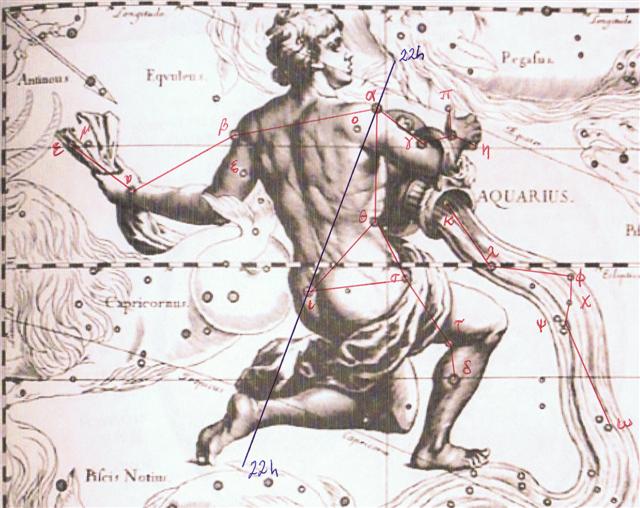 |
 |
 |
 |
 |
 |
 |
|
Ea3-30 (95) |
Ea3-31 |
Ea3-32 |
Ea3-33 |
Ea3-34 |
Ea3-35 (100) |
| tagata
rere te toki |
kua tua ko te tino
|
te toki |
marama |
toki |
|
Tino. 1. Belly (as reported by a Spaniard
in 1770). 2. Genitalia (modern usage). 3. Trunk (of
a tree), keel (of a boat); tino maîka, banana
trunk; tino vaka, keel. Vanaga. Body, matter;
mea tino, material; tino kore,
incorporeal. P Pau.: tino, a matter, a
subject. Mgv.: tino, the body, trunk. Mq.:
tino, nino, the body. Ta.: tino,
id. Churchill.
Tua.
1. Back, shoulder, tu'a ivi,
shoulder blade; tu'a ivi more, lumbago;
moa tu'a ivi raá, 'sun-back chicken': chicken
with a yellow back which shines in the sun. 2.
Behind (a locative adverb, used with i, ki, a, o,
etc). Tu'a-papa, pelvis, hips. Vanaga. 1.
Behind, back, rear; ki tua, after; o tua,
younger; taki tua, perineum. 2. Sea urchin,
echinus. The word must have a germ sense indicating
something spinous which will be satisfactorily
descriptive of the sea urchin all spines, the prawn
with antennae and thin long legs, and in the Maori
the shell of Mesodesma spissa. Tuaapapa,
haunch, hip, spine. Tuahaigoigo, tattooing on
the back. Tuahuri, abortion; poki tuahuri,
abortive child. Tuaivi, spine, vertebræ,
back, loins; mate mai te tuaivi,
ill at ease. Tuakana,
elder, elder brother; tuakana tamaahina,
elder sister. Tuamouga,
mountain summit. Tuatua,
to glean. Mgv. tua: To fell, to cut
down. Ta.: tua, to cut. Mq.: tua, to
fell, to cut down. Ma.: tua, id. Tuaki,
to disembowel. Ma.: tuaki, to clean fish.
Tuavera, the last breadfruit spoiled by the
wind. Ta.: tuavera, burnt by the sun.
Churchill.
 |
We should immediately recognize an allusion to the star of
birth, viz. the 'pregnant' star Bharani (the Bearer - of 'fruit', offspring), because this star
had been given the label 41
Arietis → Ea4-1.
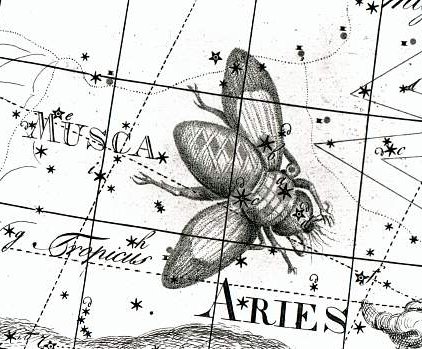
As if by chance the perceived brightness of 41 Arietis
was stated as
3.61 - suggesting Situla should be at day position 361 + 4 =
365:
|
Febr 22 |
23 (54) |
24 (420) |
25 (136 - 80) |
26 |
27 |
|
→
INVISIBLY CLOSE TO THE SUN: |
|
Al Sa'ad al Ahbiyah-23
(Lucky Star of Hidden Things)
/
Shatabisha-25
(Comprising a Hundred Physicians)
ε
Oct. (338.1),
ρ
Aquarii
(338.2), 2/365 Lac. (338.5),
SADACHBIA =
γ
Aquarii
(338.6),
π
Gruis (338.9) |
β/172
Lac. (339.2),
4/1100 Lac. (339.4),
π
Aquarii
(339.5)
*298.0 = *339.4 - *41.4
CASTOR (α Gemini) |
δ Tucanae (340.1), ρ Cephei (340.2), ν Gruis
(340.3),
ζ Aquarii, δ Gruis (340.4), 5/1100 Lac. (340.7), σ Aquarii, 6/650 Lac. (340.9)
*299.0 = *340.4 - *41.4
PROCYON (α Canis Minoris) |
υ
Oct. (341.0), α/91 Lac. (341.1),
HOMAN = ζ
Pegasi,
β Piscis Austrini (341.2), ν Tucanae (341.5), υ
Aquarii (341.9) |
η Aquarii (342.1), σ Gruis (342.4),
SITULA (Water-jar) = κ Aquarii
(342.7)
*301.0 = *342.4 - *41.4 |
ε
Piscis Austrini (343.5), ο Pegasi, β Gruis
(343.8) |
|
... γ,
4.1, greenish, on the right arm at the inner
edge of the Urn, and the westernmost star in the
Y, is Sadachbia, from Al Sa'd al
Ahbiyah, which has been interpreted the
Lucky Star of Hidden Things or Hiding-places,
because when it emerged from the sun's rays all
hidden worms and reptiles, buried during the
preceding cold, creep out of their holes! But as
this word Ah Biyah is merely the plural
of Hibā', a Tent, a more reasonable
explanation is that the star was so called from
its rising in the
spring twilight, when, after the winter's want
and suffering, the nomads' tents were raised on
the freshening pastures, and the pleasent
weather set in. This
idea renders Professor Whitney's 'Felicity of
Tents' a happy translation of the original ...
... Zeta
(uppercase Ζ,
lowercase ζ; Greek:
ζήτα
... is the sixth letter of the Greek alphabet.
In the system of Greek numerals, it has a value
of 7. It was derived from the Phoenician letter
Zayin. Letters that arose from zeta
include the Roman Z and Cyrillic З
...Zayin
(also spelled Zain or Zayn or
simply Zay) is the seventh letter of many
Semitic abjads ... It represents the sound
[z]. The Phoenician
letter appears to be named after a sword or
other weapon. (In Biblical Hebrew, 'Zayin'
means sword, and the verb 'Lezayen' means
to arm. In modern Hebrew, 'zayin' means
penis and 'lezayen' is a vulgar term
which generally means to perform sexual
intercourse and is used in a similar fashion to
the English word fuck, although the older
meaning survives in 'maavak mezuyan'
(armed struggle) and 'beton mezuyan'
(armed, i.e., reinforced concrete). The
Proto-Sinaitic glyph according to Brian Colless
may have been called ziqq, based on a
hieroglyph depicting a 'manacle' ...

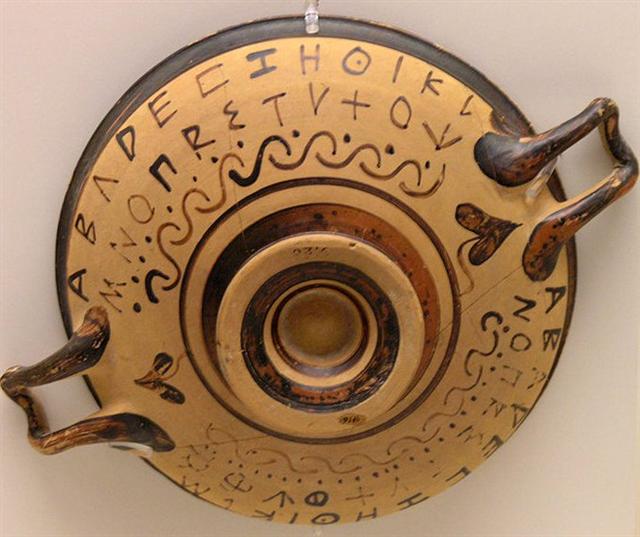
... Kaph is thought to have been derived
from a pictogram of a hand (in both modern
Arabic and modern Hebrew, kaph means
palm/grip) ... The manik,
with the tzab, or serpent's rattles as
prefix, runs across Madrid tz. 22 , the figures
in the pictures all holding the rattle; it runs
across the hunting scenes of Madrid tz. 61, 62,
and finally appears in all four clauses of tz.
175, the so-called 'baptism' tzolkin. It seems
impossible, with all this, to avoid assigning
the value of grasping or receiving. But in the
final confirmation, we have the direct evidence
of the signs for East and West. For the East we
have the glyph Ahau-Kin, the Lord Sun,
the Lord of Day; for the West we have
Manik-Kin, exactly corresponding to the term
Chikin, the biting or eating of the Sun,
seizing it in the mouth.

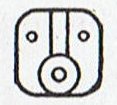

The pictures (from Gates) show
east, north, west, and south; respectively (the
lower two glyphs) 'Lord' (Ahau) and
'grasp' (Manik). Manik was the 7th
day sign of the 20 and Ahau the last ... |
 |
 |
 |
 |
 |
 |
|
Ea4-1 →
Bharani |
Ea4-2
(102) |
Ea4-3 |
Ea4-4 (8 * 13) |
Ea4-5 (5 *
21) |
Ea4-6 |
|
Tagata moe |
marama |
tagata moe - marama |
kua
oho - vai taketake |
te
hokohuki - moa ia |
hokohuki |
|
Take. The Marquesans are the only
people who own to a distinctive national name,
and retain a tradition of the road they
travelled from their original habitat, until
they arrived at the Marquesan Islands. They call
themselves te Take, 'the Take
nation'. Fornander. Take, Tuvaluan for
the Black Noddy (Anous Minutes). The
specific epithet taketake is Māori for
long established, ancient, or original. In the
Rapa Nui mythology, the deity
Make-make was the chief god of the birdman
cult, the other three gods associated with it
being Hawa-tuu-take-take (the Chief of
the eggs) his wife Vie Hoa and Vie
Kanatea. Wikipedia. |
The vai taketake glyph at February 25 could have been
designed to indicate a 'mouth at the top of
the roof', cfr February 18.
... When it was evident that
the years lay ready to burst into life, everyone
took hold of them, so that once more would start
forth - once again - another (period of)
fifty-two years. Then
(the two cycles) might proceed to reach one
hundred and four years. It was called 'One Age'
when twice they had made the round, when twice
the times of binding the years had come
together. Behold what was done when the years
were bound - when was reached the time when they
were to draw the new fire, when now its count
was accomplished. First they put out fires
everywhere in the country round. And the
statues, hewn in either wood or stone, kept in
each man's home and regarded as gods, were all
cast into the water.
Also (were) these (cast away) - the pestles and
the (three) hearth stones (upon which the
cooking pots rested); and everywhere there was
much sweeping - there was sweeping very clear.
Rubbish was thrown out; none lay in any of the
houses
...
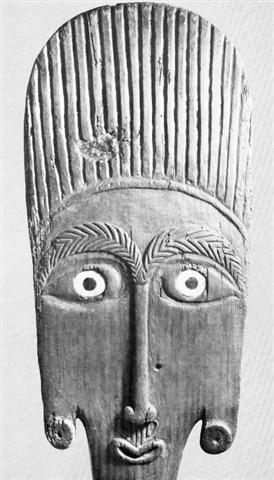
... In the present context
'mouth' has an additional connotation, given
that it refers in part to Heart of Earth, the
deity called 'Mundo' today. This is the
great Mesoamerican earth deity, the ultimate
swallower of all living beings, depicted in
Classic Mayan art (in the Palenque relief
panels, for example) as an enormous pair of jaws
upon whose lips even the feet of great lords
must rest in precarious balance, and into whose
throat even great lords must fall. Turning to
the contemporary scene, daykeepers who visit the
main cave beneath the ruins of Rotten Cane,
the last Quiché capital,
speak of the danger of falling into 'the open
mouth of the Mundo' there, which is said
to be more than four yards wide ...
This idea (picture) could
explain why
Waman Puma perceived the ascending path inside
the central letter of the World of the Pope (Mundo
Pontifical) up in
the north should have a
pit in its center:

... A crack opened up in the
ground, and the Rat was put down into the pit,
to rest there - he hakatopa i te kioe.ki raro
ki te rua.he hakarere ... [E:
4]
... Interestingly, since
another meaning of shi is 'death', the
number 4 is considered unlucky. (For example,
the floor numbering in hotels
sometimes jumps mysteriously from 3 to 5; it's
also considered unlucky to give four of
something as a present.)
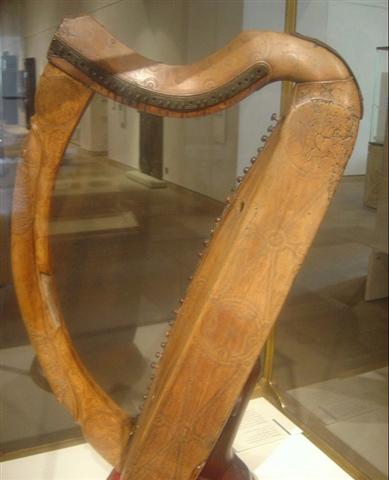
|













